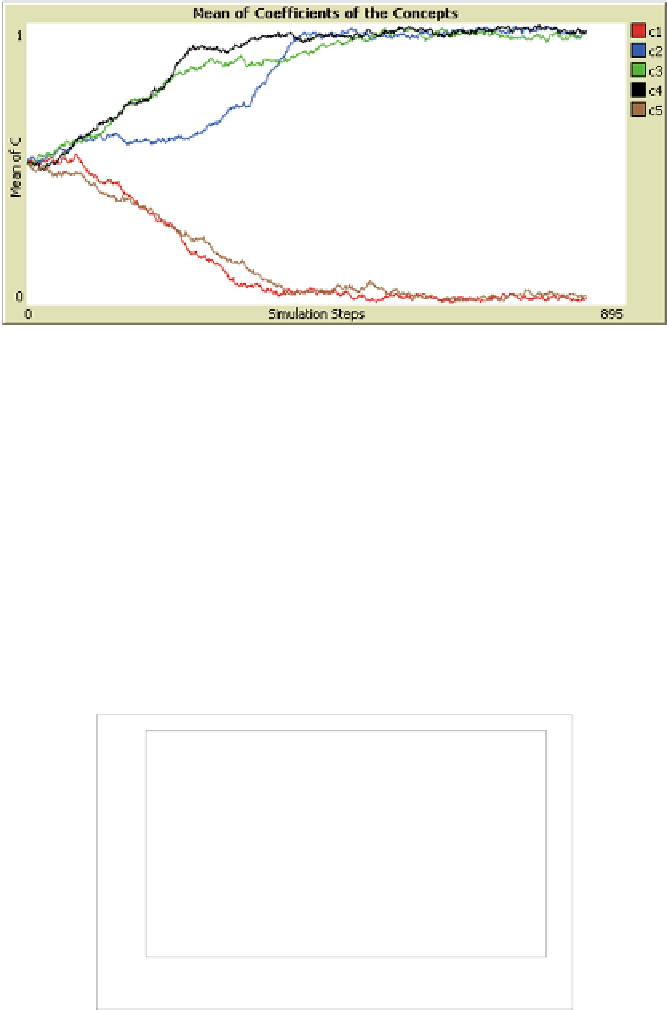Information Technology Reference
In-Depth Information
Fig. 3.
Mean of coefficients of concepts (c1 through c5), for
p(a1)
= 0.2 and
p(a2)
= 0.8
agents' minds. Conceptually, this is equivalent to a group of related concepts that
have a weakly contrasting (i.e., somewhat overlapping) conceptual alternative, such
as might be the case of concepts of
male
versus
female
gender, and concepts of
liberal
versus
conservative
political views. Concepts like these tend to become polarized in
large social groups, just as occurs in our model's bifurcations.
4.4
Map of Dynamics
Since we realized the significant influence of
p(a1)
and
p(a2)
on the type of dynamics
that emerged, we ran simulations using more combinations for these two variables.
The types of dynamics of the coefficients that emerged are presented in Figure 4.
1
0.9
0.8
0.7
0.6
0.5
0.4
0.3
0.2
0.1
0
0
0.1
0.2
0.3
0.4
0.5
0.6
0.7
0.8
0.9
1
p(a1)
Bifurcation
1
0
Fig. 4.
Dynamics that emerge for coefficients of concepts, according to values set to
p(a1)
and
p(a2)
(bifurcation, 1 = convergence to 1, 0 = convergence to 0)
We confirmed that for small values of
p(a1)
and
p(a2)
, we obtained convergence to
zero; for large values of
p(a1)
and
p(a2)
, we saw convergence to one; and for other




































































